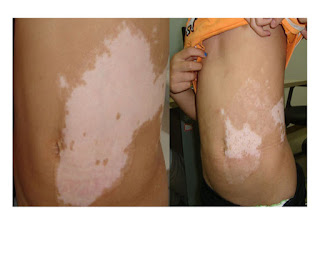Vitiligo on hands (including back of palms, palms, fingers and
finger-tips)
Vitiligo can appear on any part of the body where there is skin. The patients having vitiligo on hands are more conscious as it draws attention of people, especially in social and professional interaction. Some people having vitiligo on hands find it a bit uncomfortable shaking hands. Those involved in public appearance including teachers and speakers might feel awkward while talking in public especially holding a microphone in hand.
Although it can start at any age,beijing casu vitiligo hospital think that vitiligo often first appears between the ages of 20 and 30. The white patches may begin on your face above your eyes or on your neck, armpits, elbows, genitalia, hands or knees. They're often symmetrical and can spread over your entire body. The disorder affects both sexes and all races equally.
Vitiligo can appear on any part of the body where there is skin. The patients having vitiligo on hands are more conscious as it draws attention of people, especially in social and professional interaction. Some people having vitiligo on hands find it a bit uncomfortable shaking hands. Those involved in public appearance including teachers and speakers might feel awkward while talking in public especially holding a microphone in hand.
Although it can start at any age,beijing casu vitiligo hospital think that vitiligo often first appears between the ages of 20 and 30. The white patches may begin on your face above your eyes or on your neck, armpits, elbows, genitalia, hands or knees. They're often symmetrical and can spread over your entire body. The disorder affects both sexes and all races equally.






























